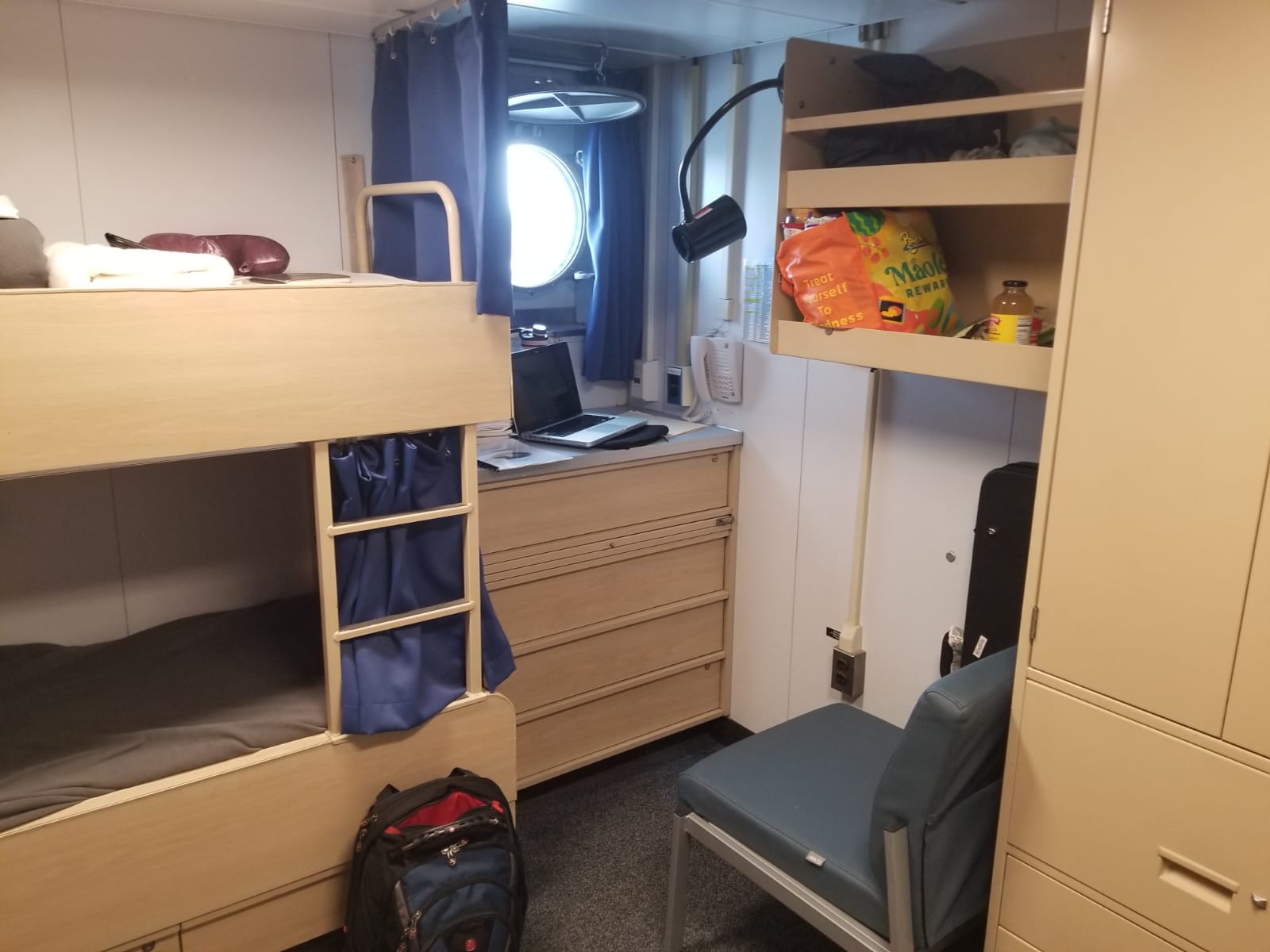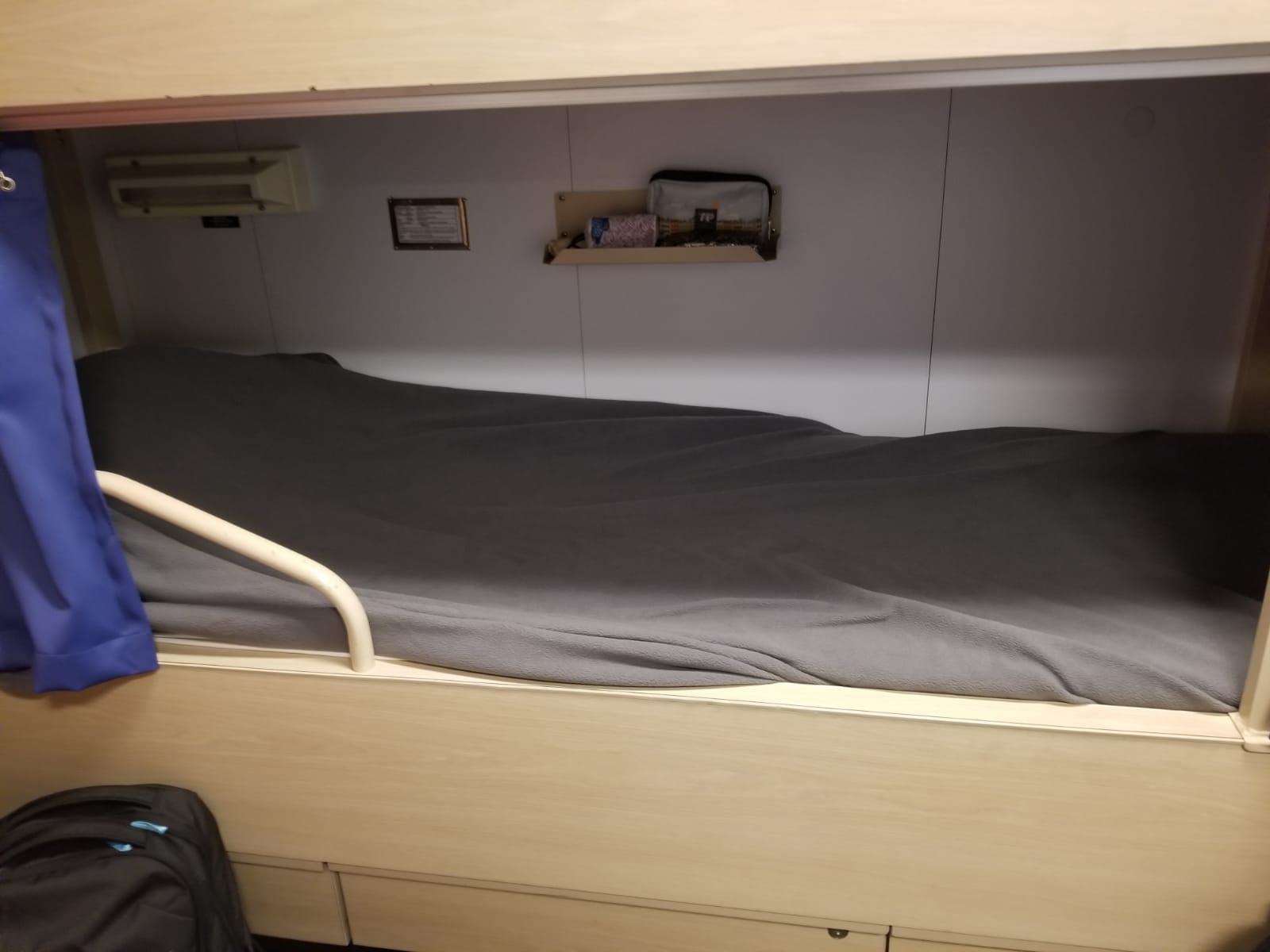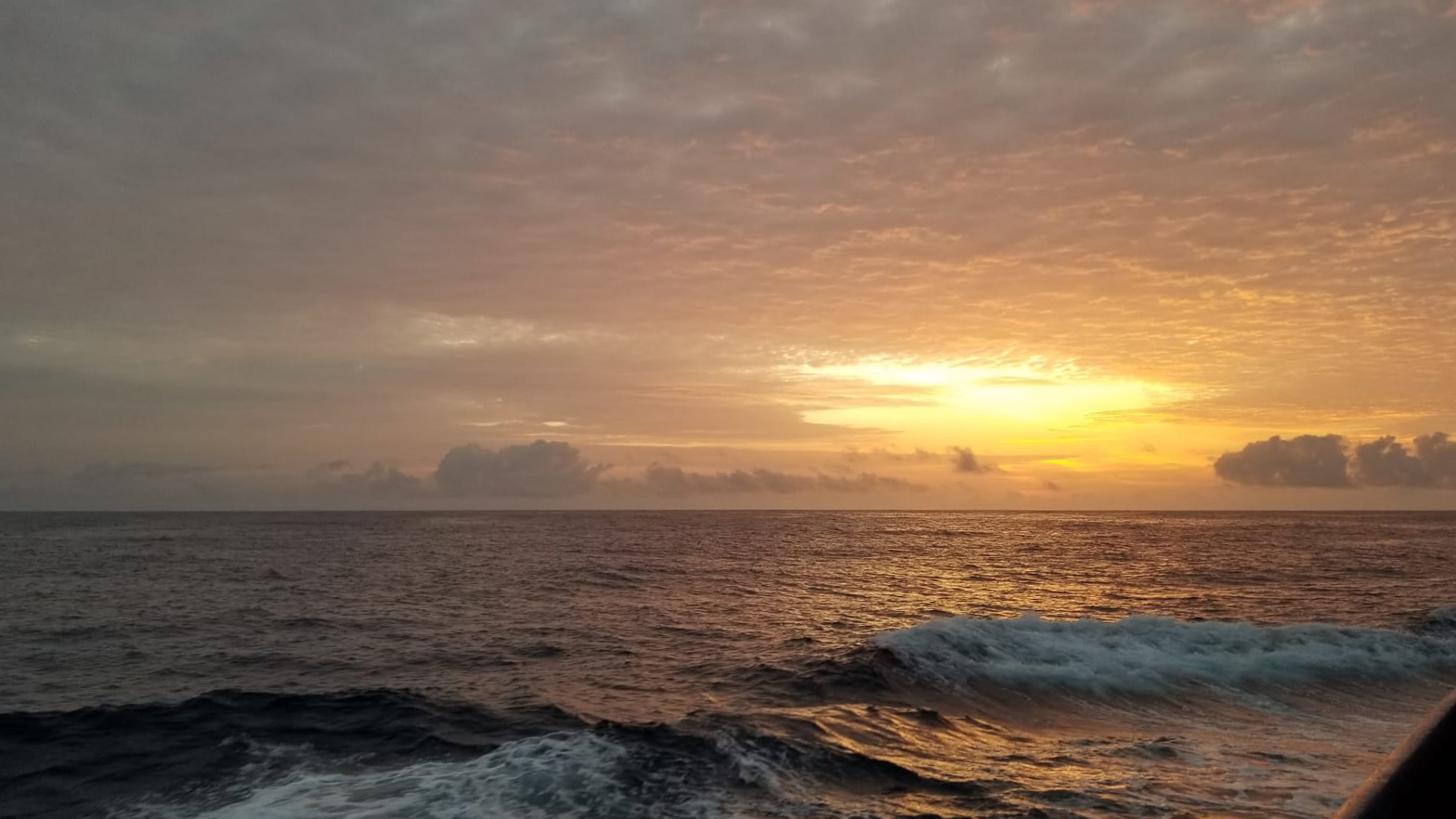11 May 2022
Enough of the science for a minute. I’m sure some of you are wondering how it’s REALLY going for us. First off, seasickness is no joke. This is my second time at sea and the ocean is a bit rougher this time. After taking more seasickness medication and giving it a few days, I and a few others are starting to feel more normal. Everyone is also on their working shifts which means I only see half of the people on the ship during my shift. Most scientists are working 1200-2400 (i.e., noon to midnight) or 2400-1200 (i.e., midnight to noon), with only time for a quick “nice to see you” in between.
In other news, people are either sleeping great or terribly. There are lots of factors that go into getting a good night’s sleep on the ship including where your room is located, what kind of deck work the crew is doing (drilling, when crew chips the rust off the ship’s exterior, tends to be loud), and how much the ship is moving. Most of the time the motion rocks me to sleep like a baby and other times I question how I’m NOT going to fall out of my bunk. This is even more fun when I’m showering and nearly tumble out of the shower then end up pressed against the wall all within a 5-second span of time. My room is located three flights of stairs (called ‘ladders’) above the main deck but most people sleep one flight below the main deck. This lower deck is right at or below the water line, so occupants have more issues with waves smacking the side of the boat and waking them up.

My stateroom: home for 43 days at sea. Photo by Sidney Wayne

Snug as a bug…my bunk! Photo by Sidney Wayne
Other non-science tasks that I partake in include laundry about once a week, fun reading, blog writing/editing, music listening, dessert snacking, and always catching up on sleep. Stayed tuned!
Signing off for now -Sidney

Sunrise photo by Sidney Wayne
